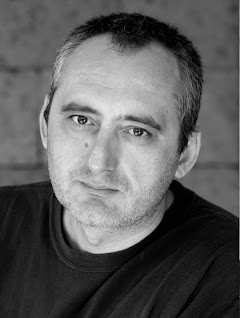Beat
Most of the time I cover conflicts in different parts of the world.
One Shot

“Just before I took this shot, Sergeant Bee turned to me and said, ‘look across the wall, do you see anything?’ Not really, I said and then - BOOM! When it happened, I saw Sergeant Bee lying in the dust, and I thought he’d been shot. I jumped to help him, and was very surprised that I didn’t find any blood and that he was still breathing. The medic came and it turned out that he’d just lost consciousness, but he was fine. Later, we shared some cigarettes, and he asked me whether I had any pictures. We looked together and I said, Bee, this is a kick-ass good shot, you’re going to be famous.”
Profile
Some of my earliest memories of photography are pictures of my grandparents and parents when they were young. People used to prepare to be photographed and would put on their best clothes. It wasn’t spontaneous, but somehow it was so important. That’s why I like these old pictures; they were so important to people.
When I was a teenager, my father ordered me to sell my motorbike and get a camera. One of my sister’s best friends, Mico Smiljanic, was a photographer and I learnt grey-scale and a lot of other things from him. He was an amazing teacher and a big influence on my picture development at the very beginning. I believe what he taught me when I was 13 or 14 was really important, because it meant that I grew up understanding the technical basics of photography, and when I started working it was something I felt I had always known.
My first experience of taking pictures of conflict was back in 1991 and 1992 in today’s Croatia and Bosnia, where I did some stories for my local newspaper and also gave some pictures to Reuters. Later, I stayed in Kosovo for almost three months of conflict. It’s difficult covering a story when your own country is involved, it’s painful. Yet I think I kept my emotions away from my work. I truly believe I’ve been really objective in everything.
When you’re reporting, I don’t believe it’s the time to be scared. You just do what you have to do, then you can get scared afterwards. When I’ve been on a battlefield I’ve always managed to keep my head straight and to think about my pictures and what I’m doing, because if you get too scared and don’t get a picture, there is no reason to risk your life out there. And I love it, I love to go to a conflict zone.
Some images are relatively easy to capture, but if you get a picture like the one I took of U.S. Marine Sergeant Bee, or you have a shot of the moment when a tank shell hits a building and there are plasters falling, or you have these pictures from Libya of shrapnel lying next to soldiers as they are jumping… That’s the real challenge.
While shooting any story, I never want to be influenced by a photographer who has done something there before me. I just want to get to the place where the story’s happening and open my eyes.
Going to cover a conflict where there are lots of photographers around you, and then winning coverage is a hard thing to do. You have to work hard and you have to be disciplined, that’s the key.
I don’t want to betray the people I’m covering. If they’re going and dying, I’m going to follow them to the end, whenever the end is. If I have enough light to take pictures, and I don’t get shot, I’m going to follow. When I was with a group of rebels who advanced inside the Syrian army barracks, for example, I went in with the first group of four or five and they were a bit shocked seeing me there, but I stayed on until there was no more light.
I’ve imagined covering the Battle of Stalingrad, considered the mother of all battles. It was a brutal urban fight and I believe it has some similarities with Syria, when you consider how much passion the people who are killing each other have. I think both sides have the strong belief that they are right. When I imagine the huge German army and the huge Soviet army fighting, I think it would be similar to Damascus in the streets. I don’t think that much has changed in this urban style of fighting. The eye of the sniper in everywhere, and to run you have to be fast.
Behind the Scenes


